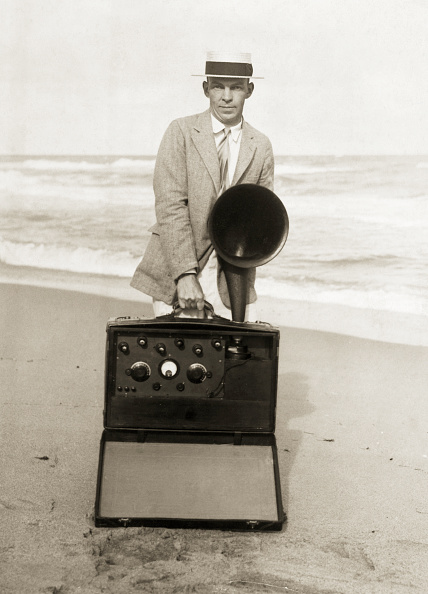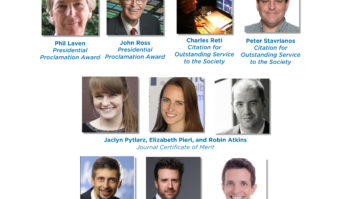This is the fifth installment in a recurring series that looks back at developments that have shaped radio broadcasting during the past 100 years, noting advancements and historical moments month by month. Read April’s story here.

100 Years Ago – May 1924: The second of several court battles between Lee deForest and Edwin Armstrong begins in an effort to determine priority in the invention of the regenerative feedback circuit. Litigation would continue well over a decade, with the U.S. Supreme Court eventually deciding that deForest should be credited with the invention. (Even after the decision, many members of the engineering community still sided with Armstrong as the true inventor of the regenerative feedback circuit.)
75 Years Ago – May 1949: Little Rock, Arkansas radio stations KARK and KGHI have requested NAB involvement in an on-going legal battle. The litigation centers on legislation drafted by a Little Rock city attorney in an attempt to sidestep the long-held principle that radio stations are instrumentalities of interstate commerce, and as such are exempt from state and local ordinances, and may be taxed only by the federal government.
The new Little Rock tax is based on “the generation of electromagnetic waves for radio broadcasting,” and assesses each station operating within the city an annual levy of $250, along with an additional $50 tax to be paid by anyone selling radio advertising. The two stations, having borne the cost of litigating the matter as far as the Arkansas Supreme Court (which upheld the tax), contend the NAB should appeal the case to the U.S. Supreme Court, as “cities everywhere are likely to snap up the Arkansas decision as precedent for local radio taxes.”
50 Years Ago – May 1974: As part of an initiative by the NAB’s Small Market Radio Committee, a 23-person FCC delegation, including the Commission’s new General Counsel, Ashton Hardy, visited radio stations in two small Virginia cities (Fredericksburg and Orange) to acquaint regulators with the issues faced in small-market operations. (Many of the FCC group had never been inside a radio station prior to the trip.) After their return to Washington, their comments included: “What impressed me most was that it (station operation) was a one-man operation, (with) everybody wearing several hats.” General Counsel Hardy remarked: “Every regulatory agency has got to realize you’re dealing with people. When you’re writing regulations, you’ve got to remember you’re regulating people.”
25 Years Ago – May 1999: Questions still abound in connection with the proposed “in band -on channel” implementation of U.S. digital radio broadcasting, with the three IBOC system proponents — USA Digital Radio, Lucent Digital Radio, and Digital Radio Express — now committed to delivering test results on their respective systems to the DAB subcommittee of the recently reactivated National Radio Systems Committee (NRSC). Concerns about implementation of any hybrid digital system include the impact on analog signals, how best to allocate bits (audio quality versus robustness), and the digital signal’s ability to withstand interference from other radio signals.








